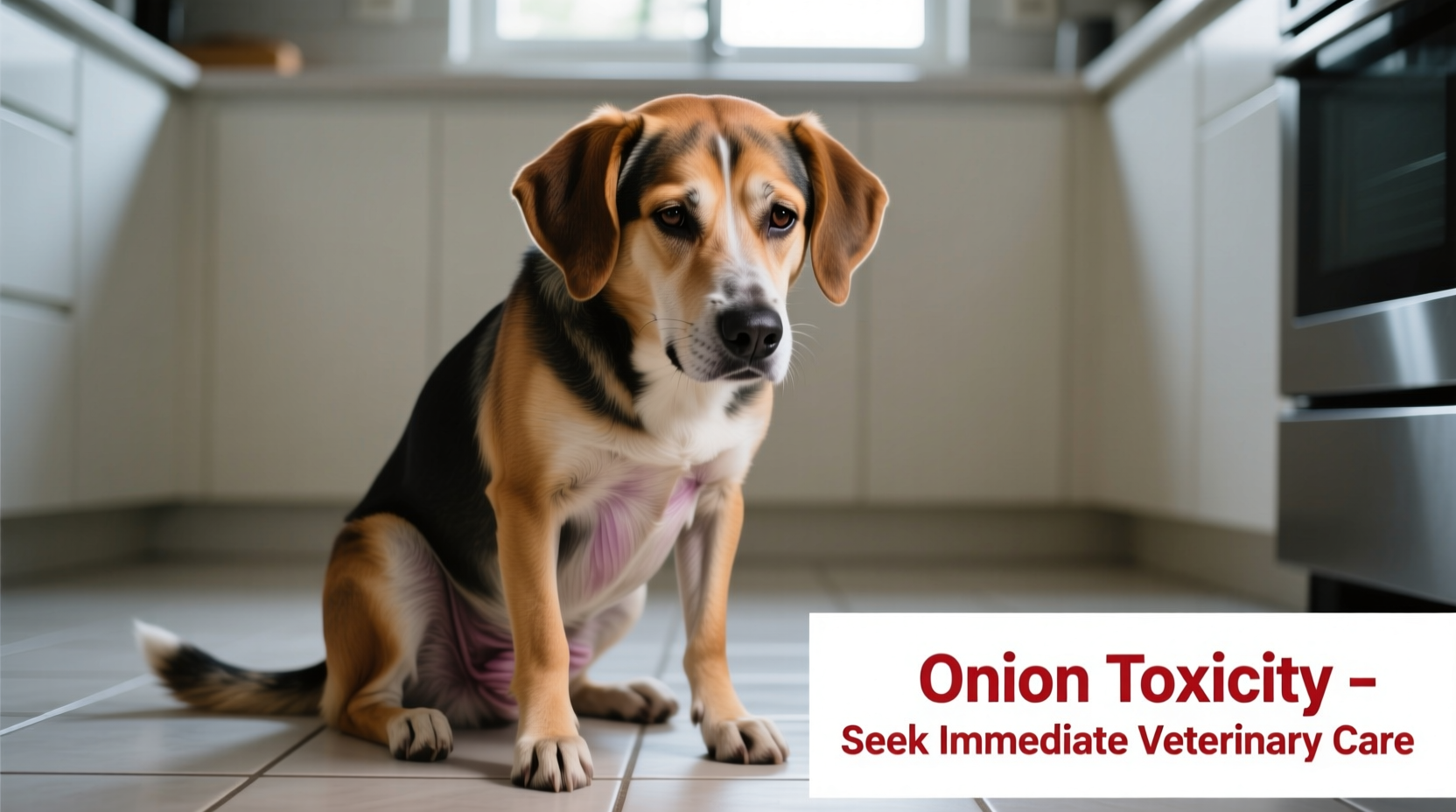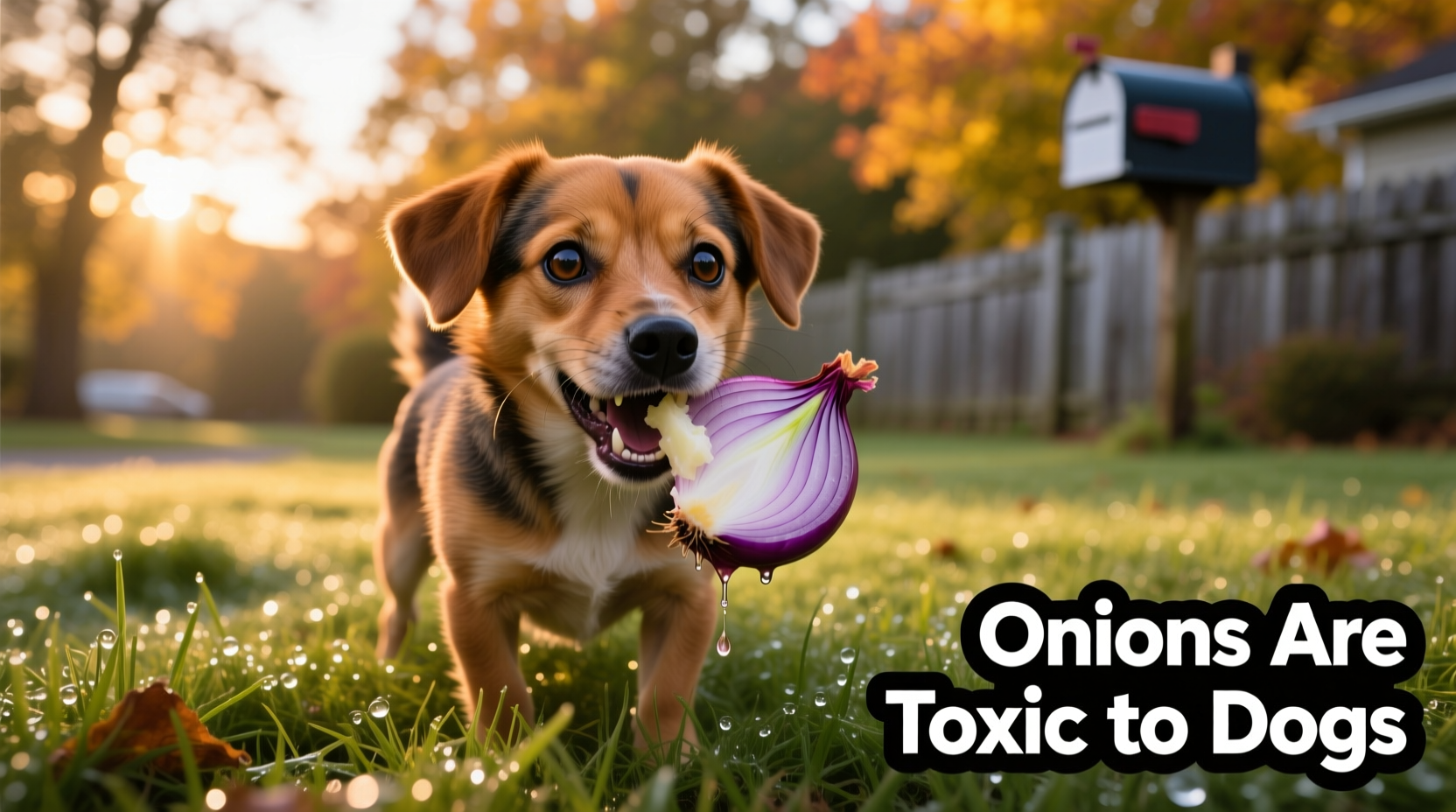Immediate Answer: Onions are toxic to dogs due to N-propyl disulfide, which damages red blood cells. A single small piece (under 0.5 oz) typically won't cause severe harm in medium-to-large dogs, but requires 48-hour monitoring for symptoms like weakness or vomiting. Contact your veterinarian immediately if your dog consumed more than 0.5% of their body weight in onions.
What to Do Right Now: Your Emergency Action Plan
If your dog just ate an onion piece, stay calm but act quickly. Most small ingestions (<0.5 oz) won't cause immediate danger, but require careful monitoring. Here's your step-by-step protocol:
First 30 Minutes: Critical Assessment
- Estimate the amount - Was it a teaspoon-sized piece or larger? Measure any remaining onion
- Note your dog's weight - Smaller dogs face higher risks from the same amount
- Check for other ingredients - Onion powder or cooked onions in sauces increase toxicity
- Call your vet or animal poison control - Have the ASPCA Animal Poison Control number (888-426-4435) ready
| Dog Weight | Low-Risk Amount | High-Risk Threshold | Immediate Action |
|---|---|---|---|
| 10 lbs (4.5 kg) | < 0.05 oz | > 0.1 oz | Vet consultation required |
| 30 lbs (13.6 kg) | < 0.15 oz | > 0.3 oz | Monitor closely |
| 70 lbs (31.8 kg) | < 0.35 oz | > 0.7 oz | Monitor symptoms |
Why Onions Are Dangerous: The Science Simplified
Onions contain N-propyl disulfide, a compound that oxidizes hemoglobin in your dog's red blood cells. This creates Heinz bodies - damaged cells that get filtered out by the spleen, leading to hemolytic anemia. Unlike humans, dogs lack the enzyme to safely process these compounds.
According to the Merck Veterinary Manual, the toxic dose starts at approximately 15-30 grams of onion per kilogram of body weight. For reference, a medium onion weighs about 150 grams.
Symptom Timeline: What to Watch For
Damage occurs gradually - symptoms may not appear for 24-72 hours after ingestion. Track these critical phases:

When to Seek Emergency Care
Contact your veterinarian immediately if you observe any of these critical signs:
- Reddish or dark brown urine (hemoglobinuria)
- Gums appearing pale or yellowish (jaundice)
- Extreme lethargy or collapse
- Rapid breathing (over 35 breaths per minute)
- Heart rate exceeding 140 BPM in small dogs or 120 BPM in large breeds
According to the ASPCA Animal Poison Control Center, approximately 27% of onion ingestion cases require veterinary intervention when amounts exceed 0.5% of the dog's body weight.
Prevention Strategies for Pet Owners
Protect your dog from future incidents with these practical measures:
- Store onions and garlic in closed cabinets - dogs can smell them through paper bags
- Use pet-safe alternatives like asparagus powder in homemade dog treats
- Train the "leave it" command using positive reinforcement techniques
- Keep human food off countertops - dogs can jump higher than you think
- Educate family members about toxic foods using visual reminders
Common Misconceptions About Onion Toxicity
Many pet owners believe these myths that could put dogs at risk:
- "Cooked onions are safe" - Cooking concentrates the toxic compounds
- "Only large amounts matter" - Repeated small exposures cause cumulative damage
- "Puppies are more resilient" - Young dogs are actually more vulnerable
- "If they ate it before with no issues, it's fine" - Sensitivity can develop over time
What Vets Do: Treatment Explained
If veterinary care is needed, here's what to expect:
- Induced vomiting - Only within 2 hours of ingestion and under professional supervision
- Activated charcoal - Administered to absorb remaining toxins
- Blood tests - Checking for Heinz bodies and anemia markers
- Supportive care - IV fluids and oxygen therapy if needed
- Transfusions - In severe anemia cases (rare for single small ingestions)
Research from the Journal of the American Veterinary Medical Association shows that 92% of dogs with mild onion exposure recover fully with proper monitoring and timely intervention.











 浙公网安备
33010002000092号
浙公网安备
33010002000092号 浙B2-20120091-4
浙B2-20120091-4